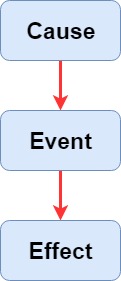Risk Register Analysis
(→Identify) |
(→Assess) |
||
| Line 21: | Line 21: | ||
== Assess == | == Assess == | ||
| + | |||
| + | |||
| + | ===Risk estimation techniques=== | ||
== Plan == | == Plan == | ||
Revision as of 21:13, 16 February 2018
A Risk Register is a tool in the risk management strategy, to keep track of risks to a "project, program or portfolio"(PPP). It is commonly used by the project or risk manager to maintain the simplest structure of possible events but can be used on every level of "project, program and portfolio management"(PPPM). The Risk register describes possible threats and opportunities to a PPP. [1] The simplest risk register consists of the cause of a risk, the event of a risk, and the effect of a risk. The register can be expanded to include the information critical to the PPP. The level of information is highly related to the scale of the PPP, where large complex PPP tends to have more information included in the risk register, then smaller and simpler project. The main reason for having a risk register is to have a standing register with action plans already established for known possible risk. If a risk occurs, the projectmanager or risk owner(explained in the plan section) can take action fast and effective to remove or reduce threats or maximize opportunities.Contents |
Introduction
A risk register consists of three main elements. It follows the same basics as the risk management strategy. [2] First and foremost it consists of the risk, secondly, it consists of the cause of the risk, and third it consist of the action of the risk. When building up a risk register these three elements will be covered by the following three steps. The first step is called Identify. Here all possible risk will be identified. The second step is called Assess. The possible risks identified must be evaluated regarding probability and impact on the PPP. The third step is called Plan. The management response is planned to ensure the if a risk materializes, the PPP is not taken by surprise. Creating and populating the risk register tends to be an iterative process since new information can occur in the process and earlier steps need to reevaluated to find the optimal solution. During the lifetime of a PPP, the risk register should be evaluated to ensure the identification of possible new risk or a change in already known risks. The register should as a minimum be evaluated just before the starting of a new phase of the PPP. It is important that threats and opportunities are communicated to stakeholders. This is a continuous process during the lifecycle of the PPP, to ensure that everyone involved knows how to respond if a risk materializes.
Identify
The first step in creating a risk register is the identification of project context. This should be done with respect to the risk management strategy. [2] The context of a PPP is depending on several factors. This includes but is not limited to the organization environment such as legislation and governance requirements, Stakeholders involved in the project and the complexity and scale of the PPP. When the context has been established, the identification of possible risk can begin. When identifying risks, the cause, event, and effect of the risk should be established. Possible risk should include any possible events that can have an effect on the PPP. It is important to state that the risk register should only consist of risk relevant to the specific PPP. The key is to keep the register as short and precise as possible, without neglecting actual risks. An example could be a new construction of an underground metro line. The line is set to be built in an urban area. The Project manager foresees a possible risk of noise complaints from residents living in the vicinity of the construction. This could lead to a hearing regarding working hours or compensation to the residents. The immediate effect on the project could be that the construction must be paused until the hearing committee decides the outcome, and the project could be delayed.
Risk identification techniques
In the process of identifying risks, several tools can be used. Some of the tools include a review of lessons learned, Risk checklists, brainstorm. These tools can then be used by the individual manager, or in risk workshops. During a risk workshop, the project manager or the designated lead should be able to use and facilitate the various identification tools listed below. A review of lessons learned from similar projects can be a useful tool since risks is a direct consequence of uncertainty. Be reviewing similar PPP and their risk registers, uncertainty regarding threats and opportunities which directly affected the PPP can be minimized. Risk checklist or in-house list of risks, general to the organization's context can be used. They contain risks that are common across the organization, and should not be disregarded. This is a useful tool to register the most common risks. Brainstorm is a good way harness the combined knowledge of a group and can often be more productive than an individual. It can also be used as a tool to clarify stakeholders opinion on already identified risks. After the identification, all risk should be expressed in an unambiguous way, so that the risk cause, event, and effect cannot be misunderstood.
Assess
Risk estimation techniques
Plan
Communicate
References
- ↑ Managing Successful Projects with PRINCE2. http://proquestcombo.safaribooksonline.com.proxy.findit.dtu.dk/9780113310593
- ↑ 2.0 2.1 Risk management strategy. http://apppm.man.dtu.dk/index.php/Risk_management_strategy

